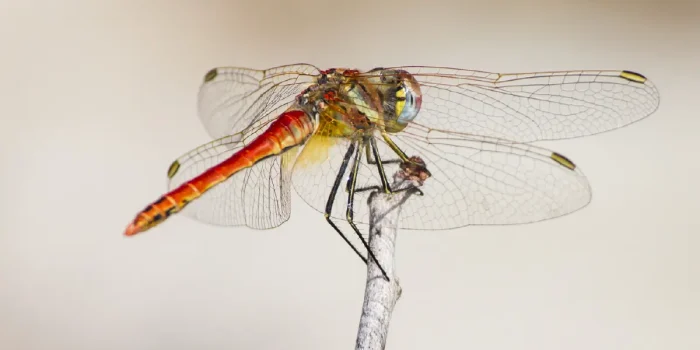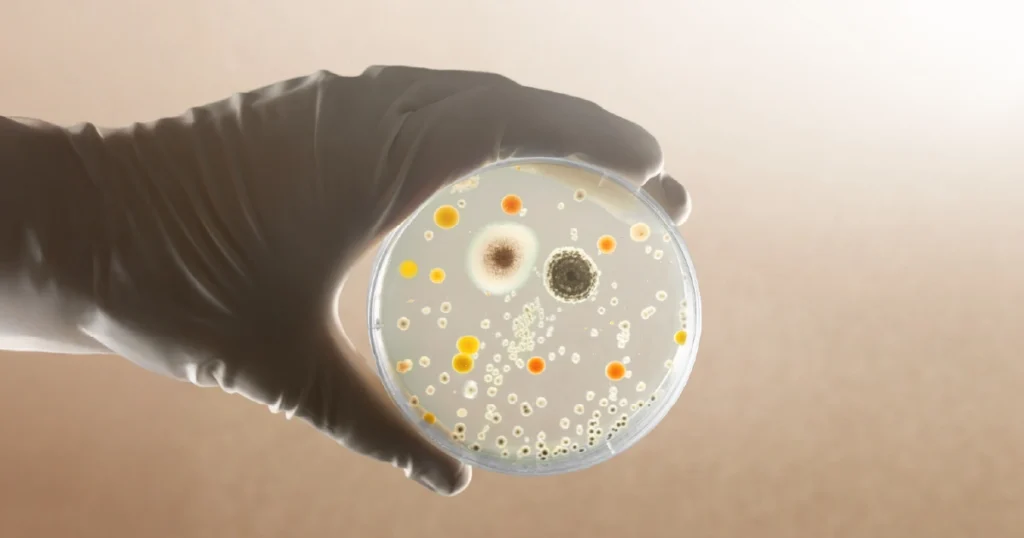Introduction
Dragonflies and ecosystem health are closely connected in freshwater environments. These agile, luminous insects do far more than decorate wetlands—they offer real-time insights into water quality and ecosystem stability. By living part of their lives underwater, dragonflies respond directly to pollution, climate change, and habitat disruption.
Why are dragonflies such powerful bioindicators, and how can they help protect both environmental and public health?
Dragonflies and Ecosystem Health: Aquatic Bioindicators in Action
Dragonflies, belonging to the order Odonata, have a complex life cycle that begins in aquatic environments. Their larvae (nymphs) live underwater for months or even years, depending on the species. During this phase, they are highly sensitive to environmental changes, particularly shifts in water chemistry, temperature, and oxygen levels. Their presence, abundance, and diversity provide a direct readout of freshwater ecosystem integrity [1].
One widely recognized tool is the Dragonfly Biotic Index (DBI), which assigns values to species based on their tolerance to pollution. This helps assess river, lake, and wetland quality quantitatively [2]. Because different species exhibit varying ecological requirements, a high diversity of dragonflies typically indicates a healthy, stable environment.
Water Quality and Habitat Conditions
Dragonflies require well-oxygenated, unpolluted water to survive. They are especially sensitive to agricultural runoff, industrial effluents, and urban wastewater, which can reduce oxygen levels and introduce harmful chemicals. The absence of dragonflies in such environments often serves as an early warning signal of declining water quality [3].
Studies have shown that dragonfly larvae bioaccumulate pollutants such as heavy metals and endocrine-disrupting chemicals. These substances affect their development, reproduction, and survival, making dragonflies excellent bio-monitors for long-term pollution exposure [3].
Because of their dual habitat use—water for development and air for reproduction—they also indicate broader ecosystem conditions, including climate and habitat stability.
Dragonflies and Biodiversity Monitoring
Dragonflies are considered “umbrella species” in many freshwater ecosystems. Their health reflects the condition of other organisms in the same environment, including amphibians, fish, and aquatic invertebrates. Consequently, shifts in dragonfly communities can signal cascading effects across the food web [4].
Monitoring dragonfly populations is relatively cost-effective and can be carried out by researchers or trained citizen scientists. Their visibility, distinct appearance, and ease of identification make them ideal for public involvement in biodiversity programs.
Moreover, dragonflies’ role in controlling mosquito populations and supporting food webs adds to their ecological significance.
Threats to Dragonfly Populations
Despite their ecological value, dragonflies are under threat. Wetland destruction, agricultural expansion, and climate change are reducing suitable habitats. Warmer temperatures can alter their life cycles, while changes in precipitation affect larval development and breeding grounds.
A global assessment by the IUCN found that one in six dragonfly species is at risk of extinction, particularly in tropical regions experiencing rapid land-use changes [5]. Invasive species, such as predatory fish or non-native plants, can also disrupt dragonfly habitats and reproductive success.
To protect dragonflies, conservationists advocate for wetland restoration, pollution reduction, and the creation of buffer zones to shield aquatic habitats from agricultural runoff.
A One Health Perspective
Dragonflies exemplify the One Health approach, which links environmental, human, and animal health. Clean freshwater ecosystems support dragonfly populations and reduce the transmission of waterborne diseases. By tracking dragonfly health, we can gather valuable data to inform water management policies and public health planning.
Integrating dragonfly monitoring into existing health and environmental programs strengthens cross-sector collaboration and enables early detection of ecosystem stressors [6]. These insights are critical as global climate patterns continue to shift.
Conclusion
Dragonflies are far more than symbols of summertime—they are vital bioindicators of freshwater ecosystem health. Their presence or absence reveals the condition of the water bodies that sustain life, making them indispensable to conservation efforts.
Adopting a One Health lens allows us to recognize the full scope of their ecological importance. In protecting dragonflies, we also safeguard water quality, biodiversity, and human well-being.
References
- Corbet, P.S. (1999). Dragonflies: Behavior and Ecology of Odonata. Cornell University Press.
- Chovanec, A. and Waringer, J. (2001). Ecological integrity of river-floodplain systems—assessment by dragonfly surveys. Regulated Rivers: Research & Management, 17(3), pp.493–507.
- Yule, C.M. and Yong, H.S. (2004). Freshwater Invertebrates of the Malaysian Region. Academy of Sciences Malaysia.
- Sánchez-Bayo, F. and Wyckhuys, K.A.G. (2019). Worldwide decline of the entomofauna: A review of its drivers. Biological Conservation, 232, pp.8–27.
- Clausnitzer, V. et al. (2009). Odonata enter the biodiversity crisis debate: The first global assessment of an insect group. Biological Conservation, 142(8), pp.1864–1869.
- Hassall, C. (2015). Odonata as candidate macroecological barometers for global climate change. Freshwater Science, 34(3), pp.1040–1049.













